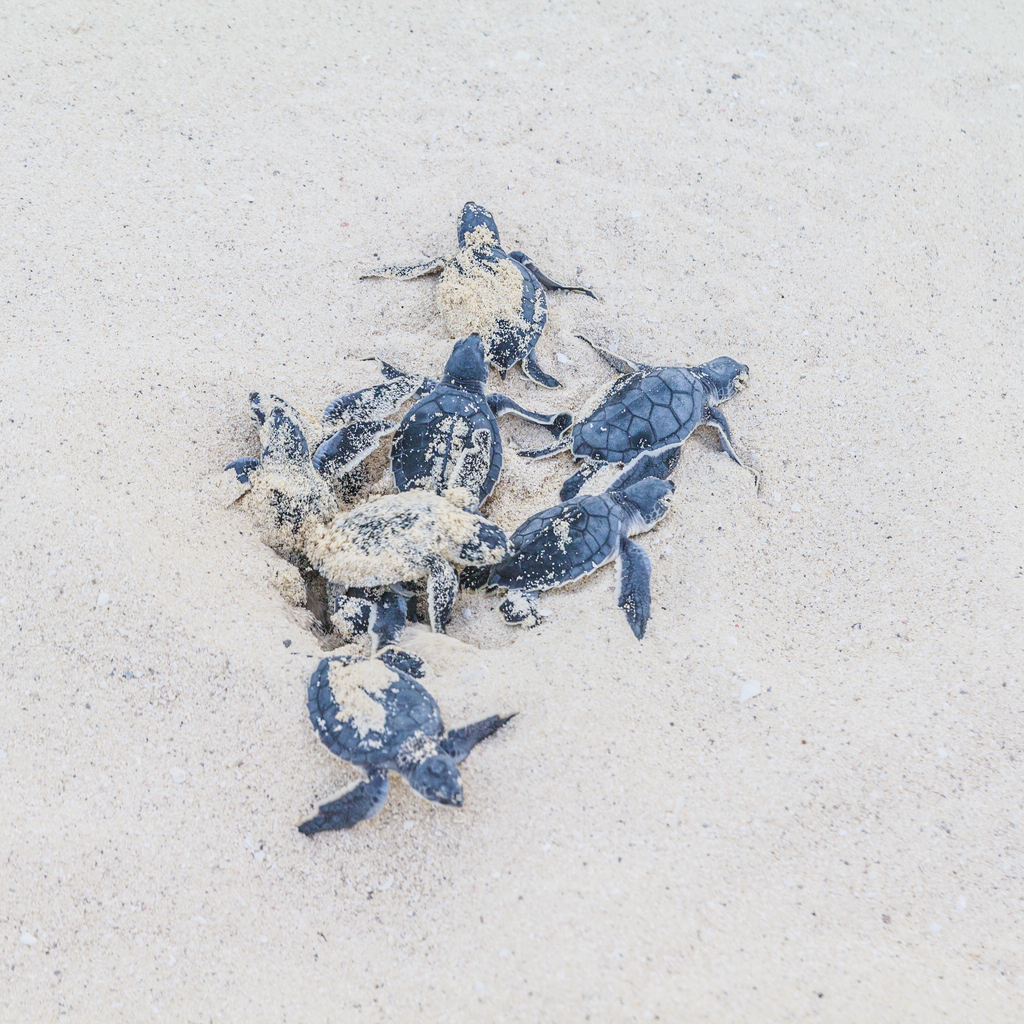During late afternoon, low tides on Hayman Island’s beachfront reveal 100 metres of exposed shoreline scattered with marine life unique to the Whitsundays’ region. To help you identify different underwater species while on your island explorations, our expert activities team have revealed the most common creatures sighted on the resort’s beachfront.
Sea Turtles
During turtle season (January to March), take a stroll after dinner on Hayman Beach to get a chance to see turtles hatching at night time. Majority of sea turtles make their way to the shoreline in Summer, when the sand is warm enough to incubate eggs (these are laid between November and January in the Whitsunday Islands).

Sand Dollar
These beautiful shells belong to a species of burrowing sea urchin. The Sand Dollars can be identified easily; they are pale in appearance, covered in very fine short spines, and they make their way through the sands at a slow pace.

Hermit Crabs
If you look closely at any shell on the sand flats, no matter how small, you will likely find a hermit crab inside. Hermit Crabs can range in size anywhere from 15cm to 0.5cm. We ask that all our guests refrain from collecting sea shells to take home – you never know whose habitat you may be disrupting, and our crabs love their Hayman Island home.
Sand Sifting Sea Stars
Be careful where you step while exploring the flats, as these camouflaged creatures tend to spend their day partially covered in sand. Nocturnal creatures by nature, the Sand Shifting Sea Stars are a common sight on Hayman Beach during the afternoon stretch.
Sea Cucumbers
These incredible creatures are known as the ocean’s mini vacuum cleaners, eating sand and digesting micro-organisms as they move through the water. Commonly found within the region, Sea Cucumbers are part of the same family as sea stars and sea urchins.Cowtail Ray
Perhaps one of the most exciting marine species to appear on Hayman Island’s beachfront is the Cowtail Ray. Coloured orange and brown, the rays have a flap on the end of their tail which looks like a cow’s tail, hence the name!
Giant Clams
Giant clams come in all shapes and sizes, with species even reaching up to 130cm and weighing in at 200kg. They fasten themselves to a specific spot on the reef’s coral system and stay there for the remainder of their lifetime. While the outside of their shells are well camouflaged, at certain points in the daytime the clams open to expose stunning vibrant patterns.
While our guests are welcome to explore the sand flats at leisure, guided tours are also available at $15 per person and can be booked through our activities team.


